Whipped Mashed Potatoes
Potatoes...But Whipped
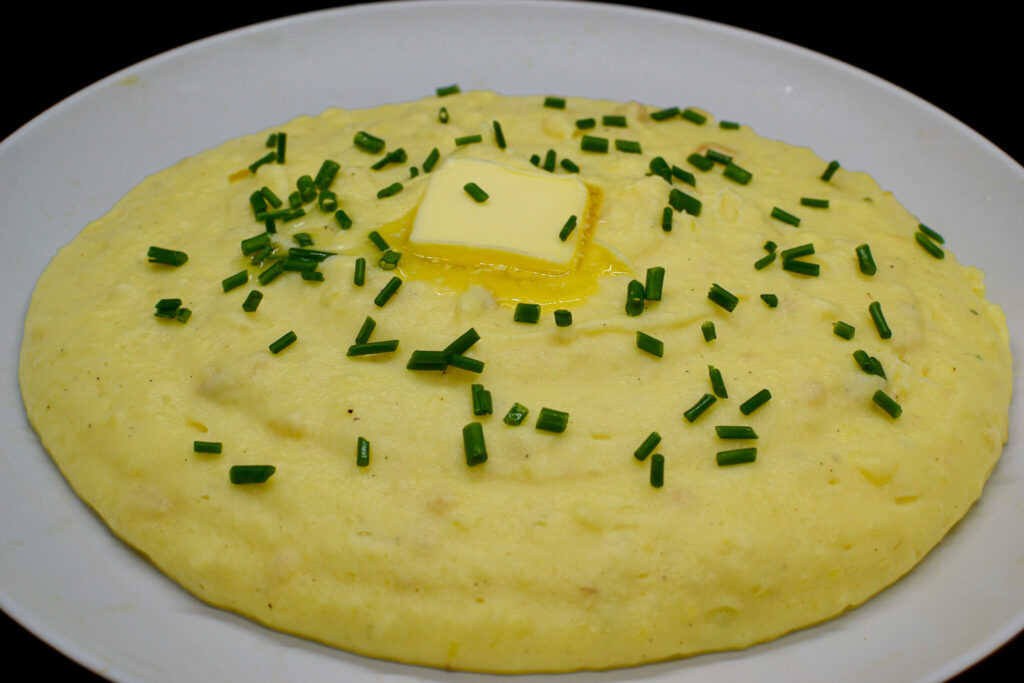
What Are Whipped Mashed Potatoes?
Whipped mashed potatoes, also known as whipped potatoes or whipped cream potatoes, are a variation of traditional mashed potatoes. Made by combining boiled or steamed potatoes, often using a stand mixer or a hand mixer, they incorporate ingredients such as butter, milk or heavy whipping cream, and seasonings. These are then whipped until achieving a light, fluffy whipped, and smooth texture.
The process of whipping incorporates air into the mixture, offering a fluffier consistency than regular mashed potatoes. These potatoes often boast a creamy and velvety texture, seasoned with ingredients like salt, pepper, garlic, herbs, and even green onion for added flavor.
Ingredients For Whipped Mashed Potatoes
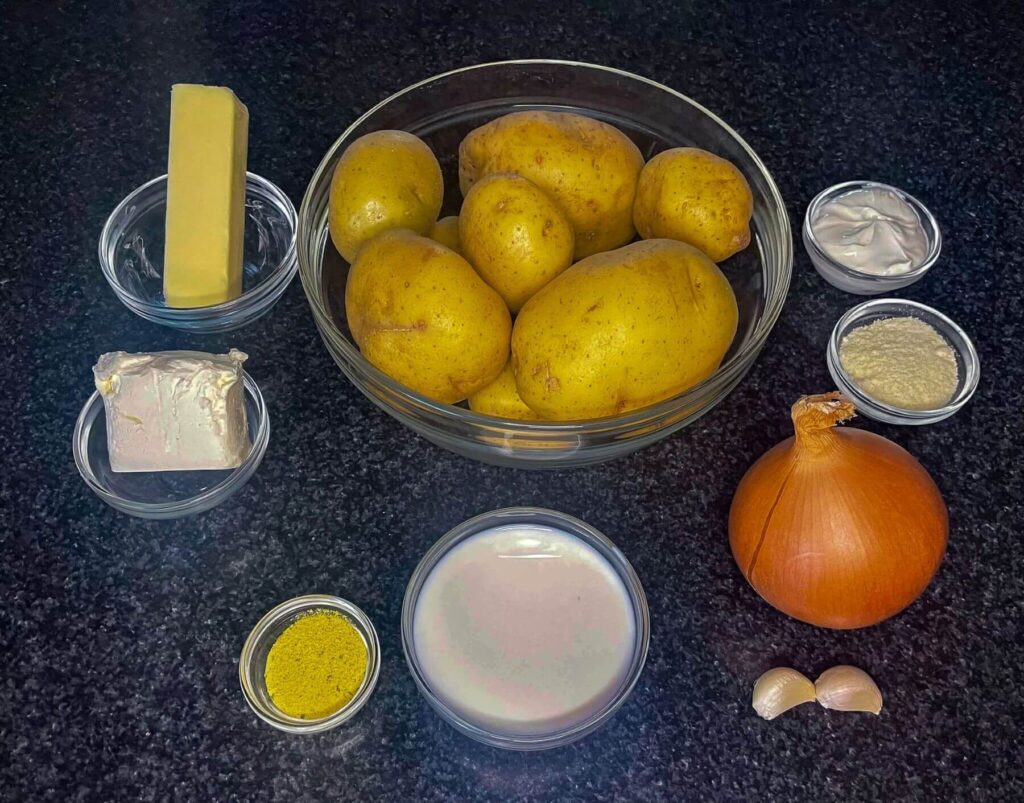

Produce
4 Pounds Yellow Potatoes
1 Sweet Onion
2 Cloves of Garlic
Refrigerated
1/3 cup Sour Cream
1/4 Cup Whole Milk
6 Tbsp Butter
1/3 Cup Parmesan Cheese
4 oz Cream Cheese
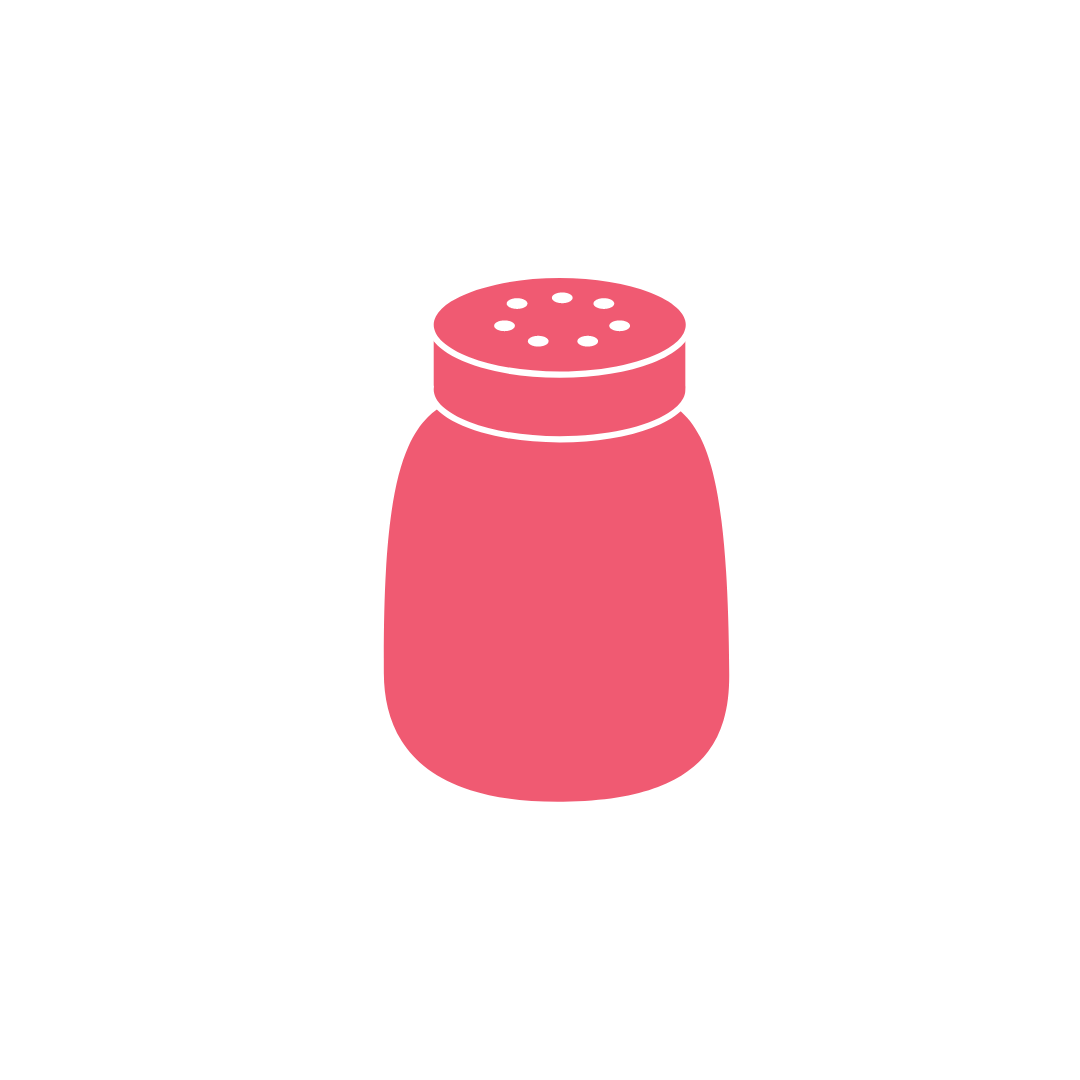
Spices
1 Tbsp Bullion Chicken Flavor
How To Make Whipped Mashed Potatoes
Step 1
Peel & Cut Potatoes
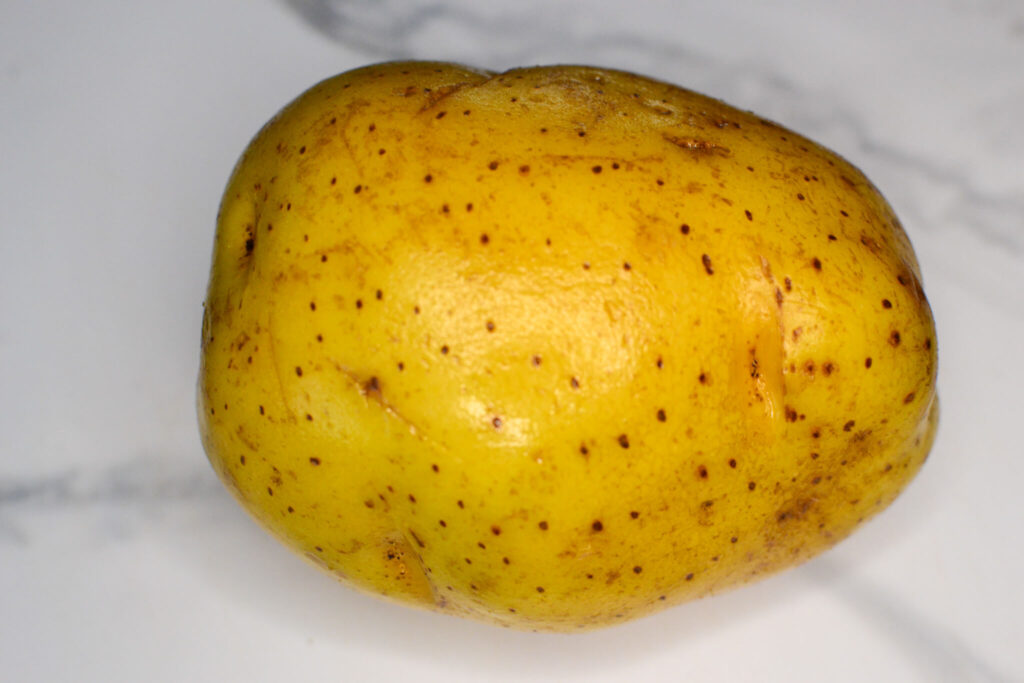
Starchy potatoes like Russet and Yukon Gold are often used in mashed potatoes recipes. Russets, with their high starch content and low moisture, break down easily when cooked, creating a fluffy, smooth consistency ideal for mashed potatoes. They also absorb butter and cream well, adding richness and flavor.
Yukon Gold potatoes, slightly less starchy than Russets, are also great for creamy mashed potatoes. They have a naturally buttery flavor and a creamy texture when mashed, perfect for those who prefer a creamier consistency.
For this particular mashed potatoes recipe, I’ve chosen yellow potatoes. These fall between high-starch Russet potatoes and lower-starch varieties in terms of starch content. They’re known for their creamy texture and slight sweetness, holding their shape well when cooked, which is ideal for various culinary uses.
Yellow potatoes, when boiled and mashed, lend a creamy and smooth texture to the dish. Their buttery flavor enhances the richness, and they can be seasoned and mixed with ingredients like butter, milk, or cream for added taste.
In terms of mashed potatoes, yellow potatoes can be a great choice if you prefer a creamier and smoother texture. When boiled and mashed, their naturally creamy flesh lends itself well to creating velvety mashed potatoes. The buttery flavor of yellow potatoes can add richness to the dish, and they can be seasoned and mixed with butter, milk or cream, and other ingredients to enhance the taste.
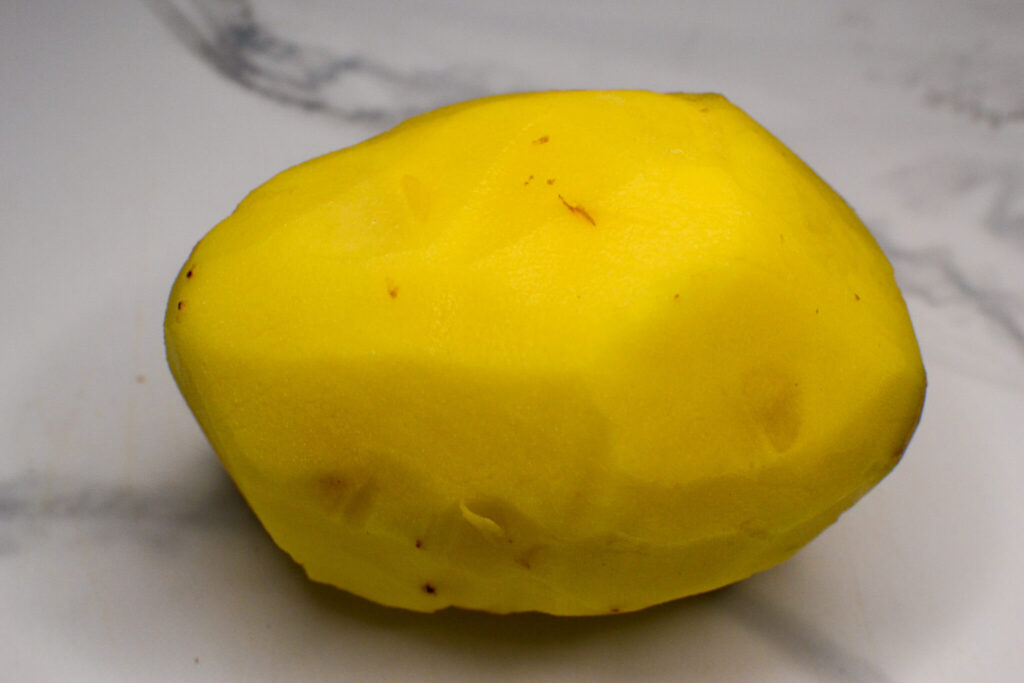
To start, peel the potatoes and cut them into roughly equal-sized chunks or cubes, aiming for 1- to 2-inch pieces. This ensures even cooking and makes them easier to mash, especially if you’re preparing mashed potatoes ahead of time. Larger potatoes may need to be halved or quartered.
Make sure your water is boiling while doing this step so it’s ready to add once you’ve peeled and cut all the potatoes.
After peeling and cutting, wash the potatoes thoroughly to remove any dirt, bacteria, or pesticide residue. This step is crucial for food safety, even after peeling, as contaminants can remain on the surface.
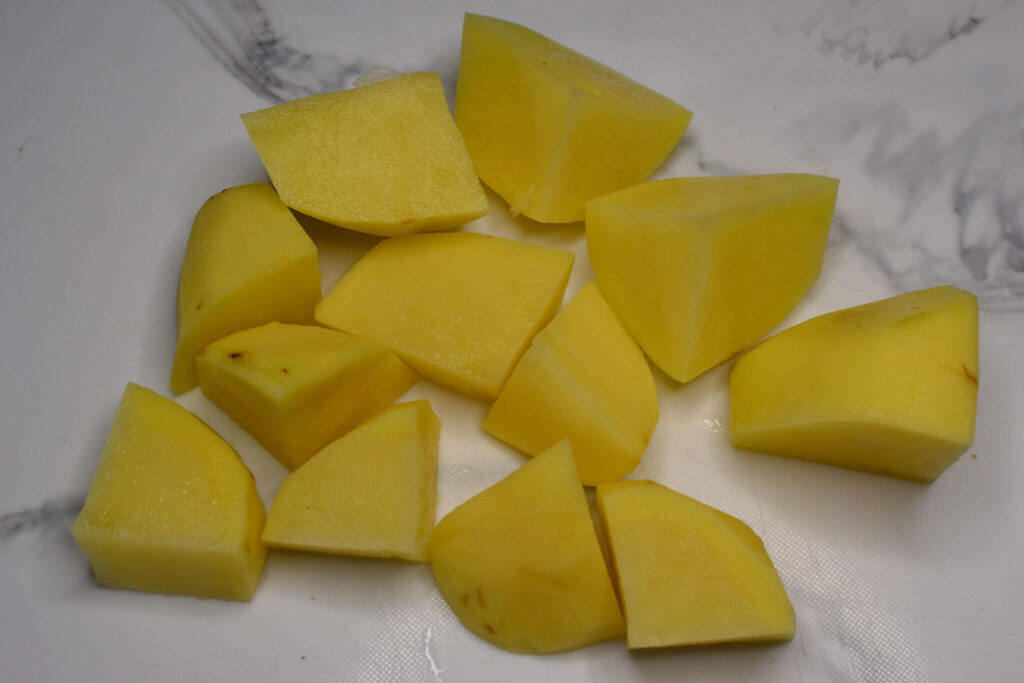
Once your potatoes are peeled, cut them into into chunks or cubes of roughly equal size. A good guideline is to aim for 1- to 2-inch (2.5- to 5-cm) pieces. This ensures that they cook evenly and are easier to mash later.
If you have larger potatoes, you may need to halve or quarter them to achieve the desired size.
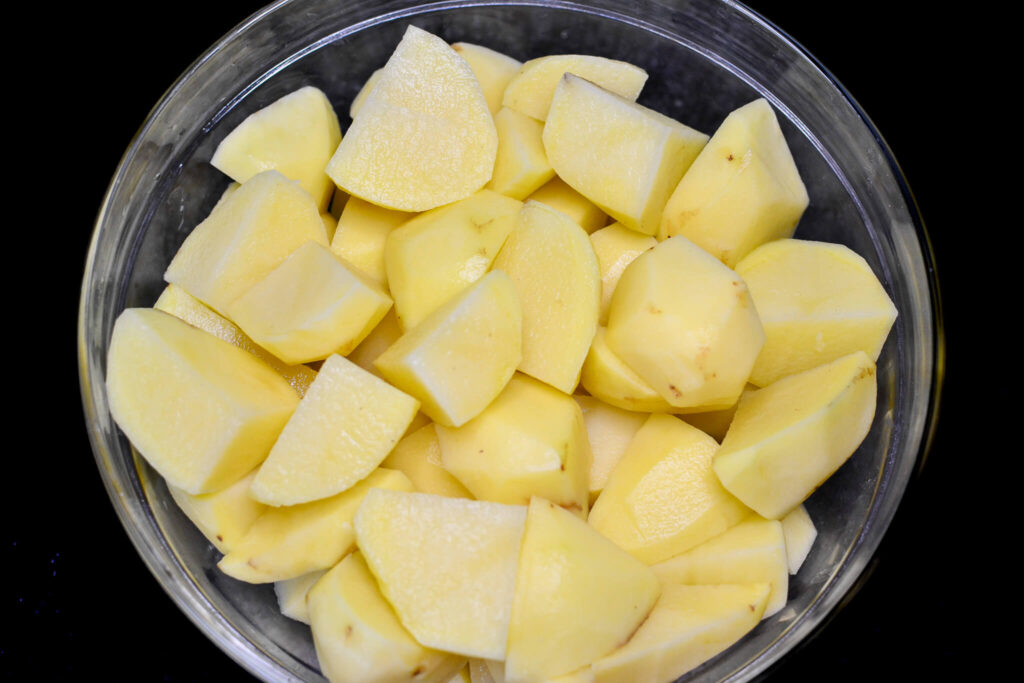
Repeat this for all potatoes and make sure you wash them all before setting aside.
Step 2
Boil Potatoes
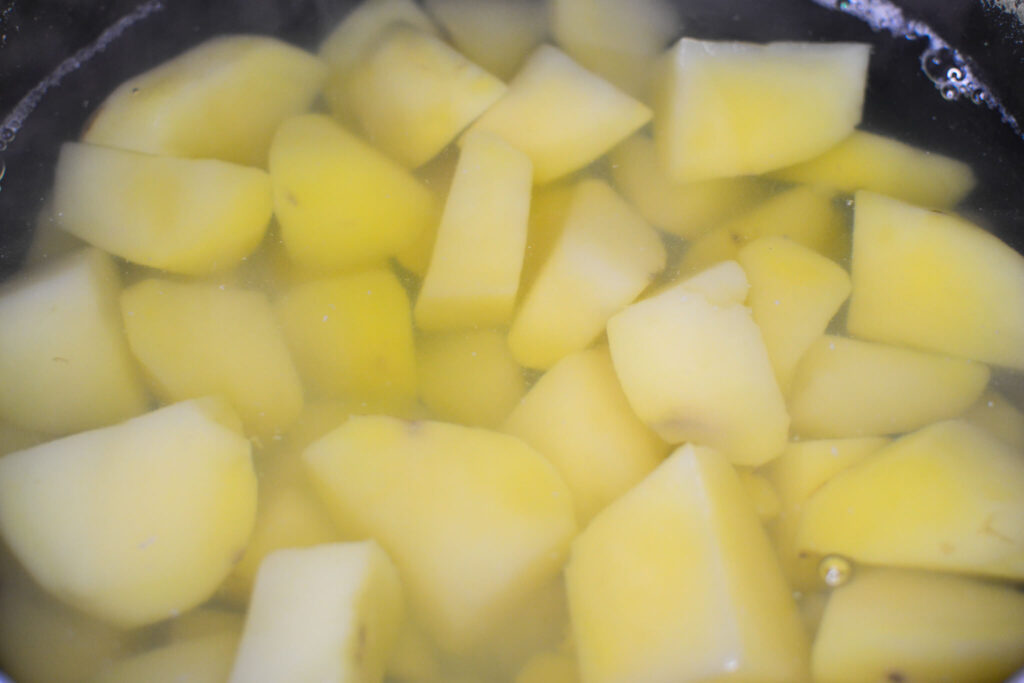
The cooking time for boiling potatoes can vary depending on the size and type of potatoes being cooked. As a general guideline, it typically takes about 15 to 20 minutes to boil potatoes until they are fork-tender. However, larger potatoes may require a longer cooking time.
Boil the potatoes in water until they are easily pierced with a fork, indicating they are ready for mashing. This process ensures that the potatoes are cooked evenly, making them perfect for your mashed potatoes recipe.
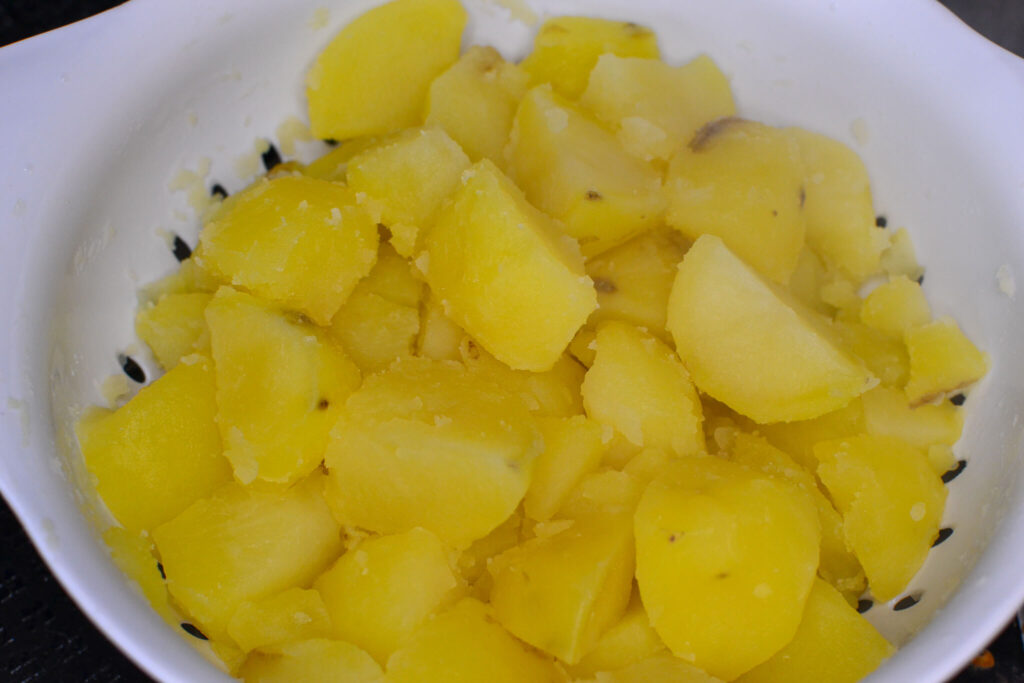
Once your potatoes are cooked and tender enough for mashing, make sure you strain and set aside for at least 5 minutes.
This process helps distribute heat evenly in the potato pieces. Boiling potatoes makes their inside very hot, and resting them afterward spreads the heat throughout. This way, they’re evenly warm when mashed, avoiding any hot or cold spots in the dish.
Also, resting boiled potatoes lets extra moisture evaporate. Boiled potatoes hold water, and mashing them right away can make them too watery. By waiting a bit, the extra water evaporates, leading to creamier mashed potatoes with a better texture, not too runny.
Step 3
Sautee Onions
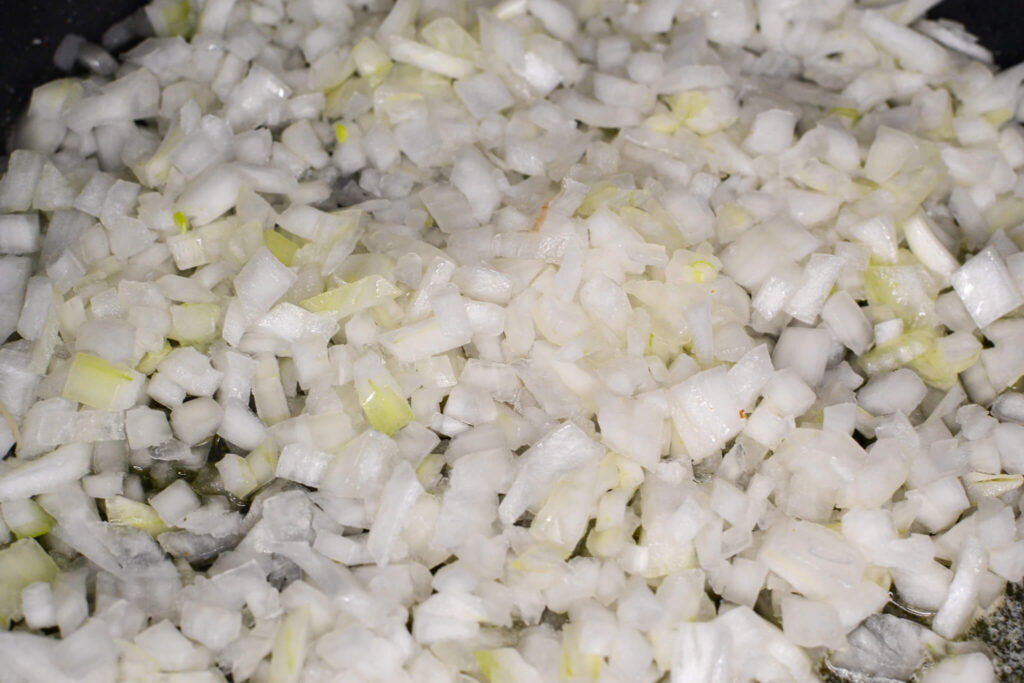
This is an optional step, but as an onion lover I simply can’t resist.
Adding sautéed onions to mashed potatoes boosts both taste and texture. The onions give a nice savory and sweet flavor, improving the overall taste. Their sweetness mixes well with the potatoes’ earthy flavor, making the dish more interesting and tasty.
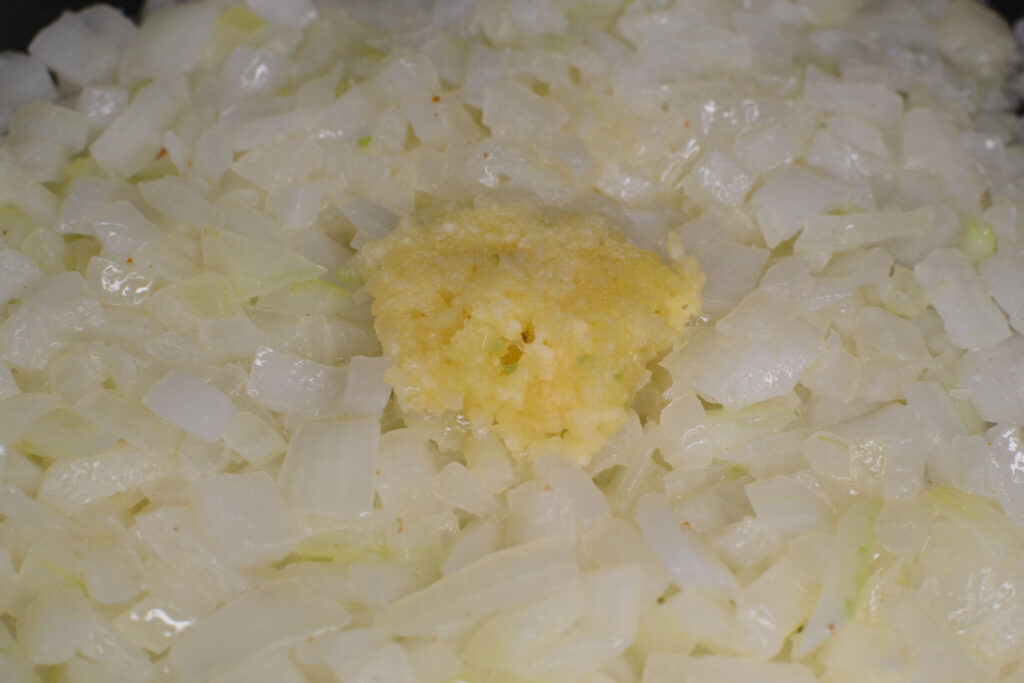
Add the 2 cloves of garlic as well, which you can either chop or mince.
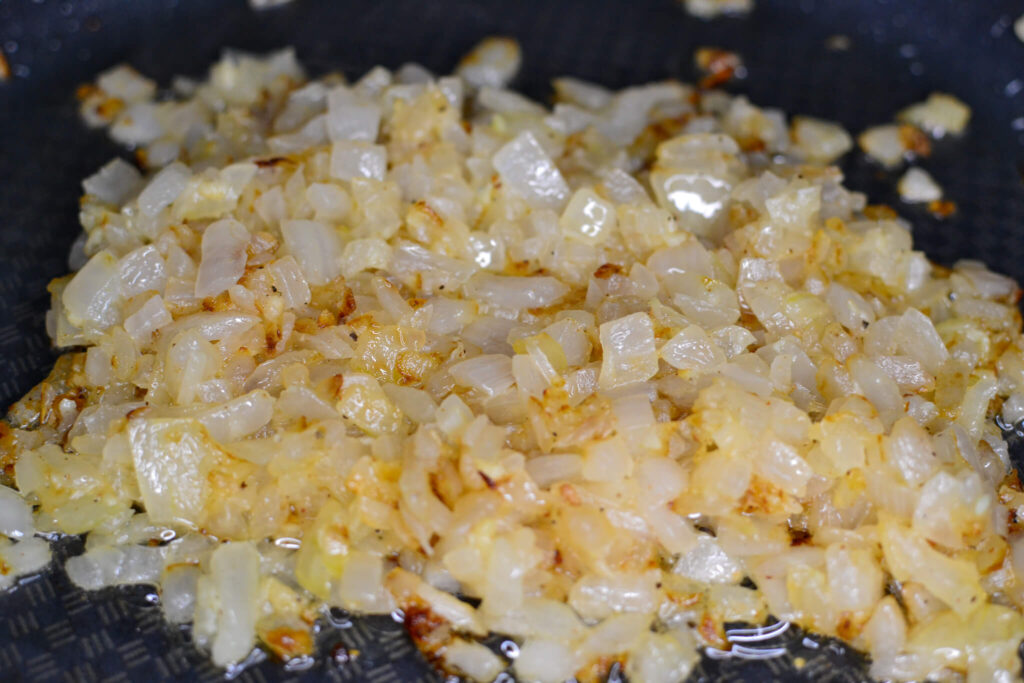
Cook on low heat and let the onions and garlic caramelize, and add in about 1/4 cup of cold water to the skillet.
Adding about 1/4 cup of water when caramelizing onions has several benefits. It aids in cooking the onions evenly, as it spreads the heat and stops them from burning or browning unevenly during the slow cooking and browning process.
The water also helps in deglazing the pan. As onions cook, they release sugars and juices that stick to the pan. Adding water and scraping these browned bits off the bottom mixes these rich flavors back into the onions, enhancing their taste.
Additionally, water keeps the onions moist, which is crucial for achieving a soft and tender texture. This prevents the onions from becoming too dry or crispy. With this added moisture, the onions caramelize slowly and evenly, resulting in a luxuriously smooth texture that melts in your mouth.
While not necessary, it’s strongly encouraged.
Step 4
Add…Everything Else
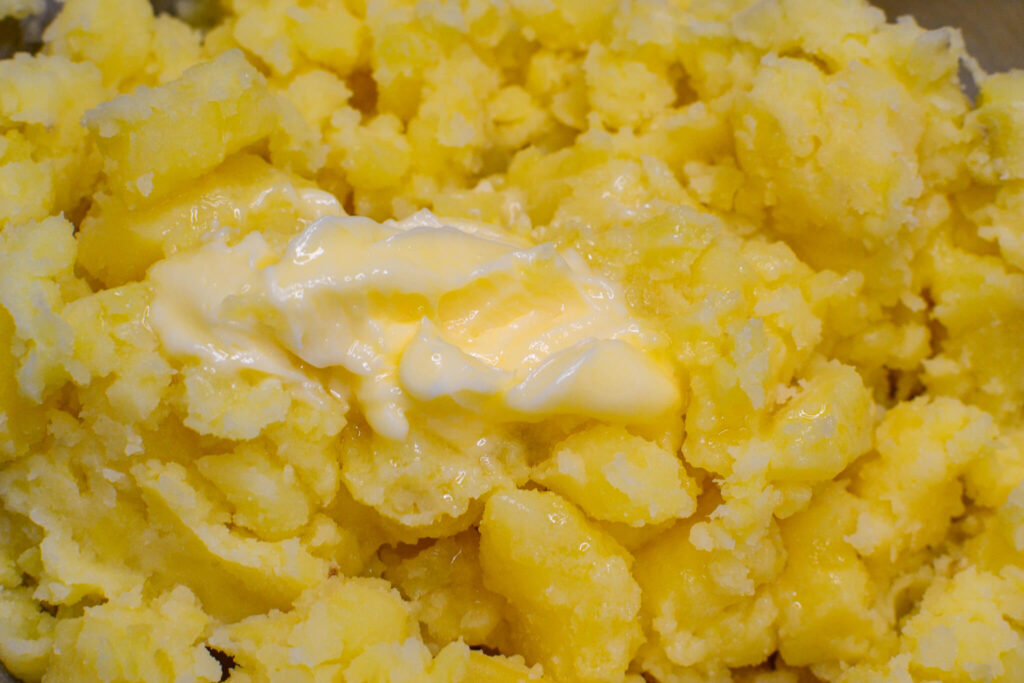
Add the cooked potatoes to a large bowl to mix in, and include the following ingredients:
- 1/3 cup Sour Cream
- 1/4 Cup Whole Milk
- 4 Tbsp Butter
- 4 oz Cream Cheese
- 1 tbsp Chicken Bouillon Seasoning
- 1 tsp black pepper
Each ingredient serves its own individual advantage:
- Butter is a classic ingredient in mashed potatoes that brings a rich, velvety, and buttery flavor to the dish. It adds a luxurious mouthfeel and enhances the overall richness of the mashed potatoes. Butter also contributes to the smoothness and helps bind the ingredients together.
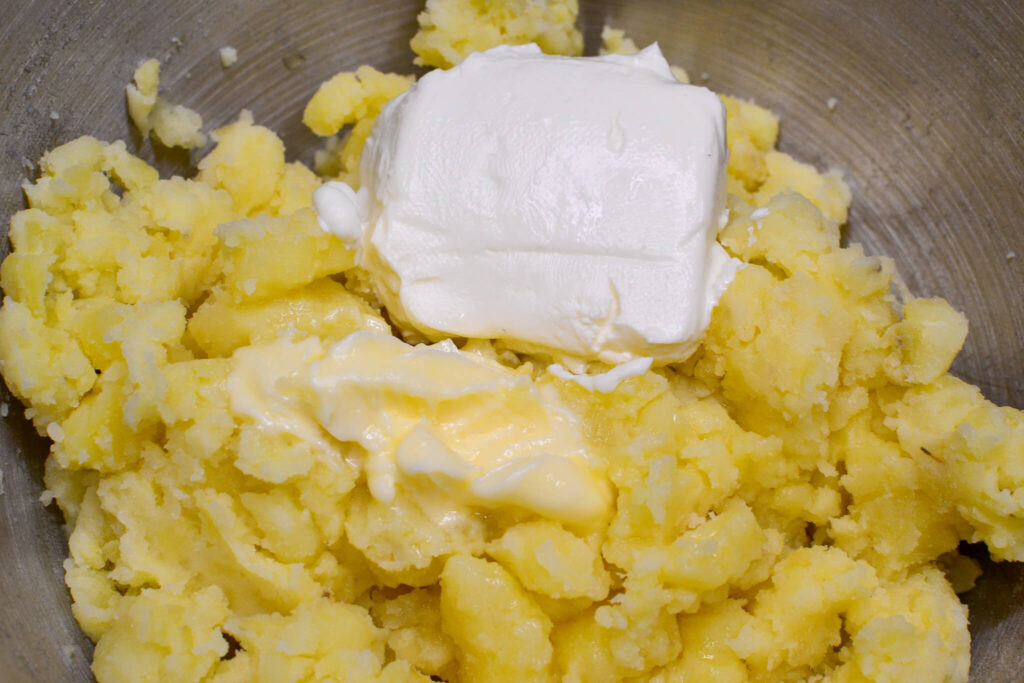
- Cream cheese adds a luscious and tangy flavor to mashed potatoes. It adds a velvety smoothness and a subtle tang that complements the other ingredients. Cream cheese can also enhance the overall creaminess of the mashed potatoes, making them even more indulgent.
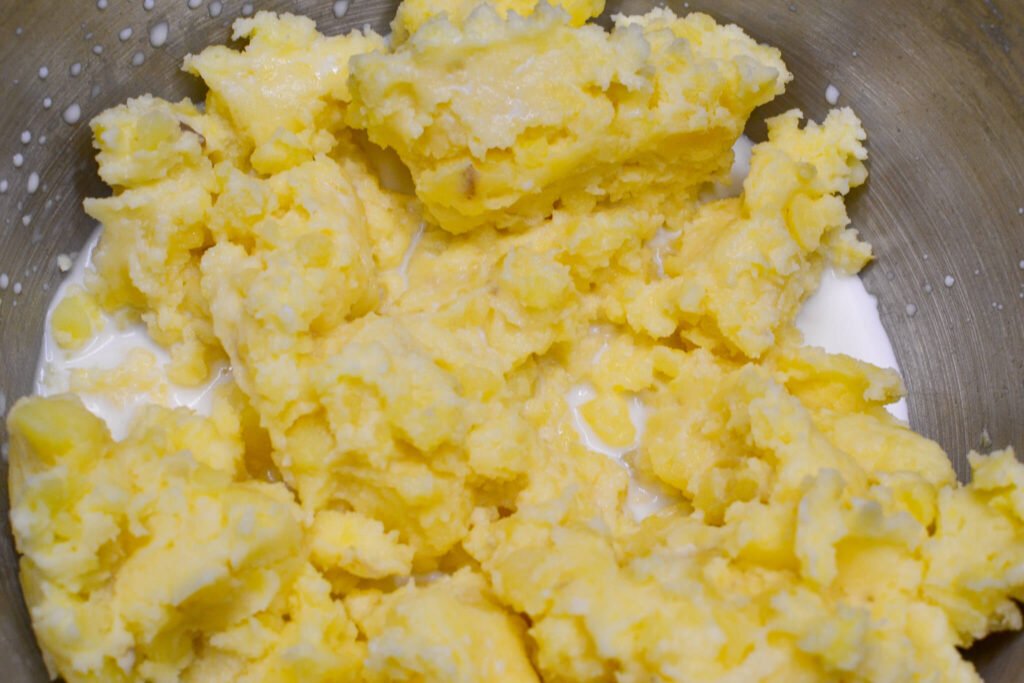
- Whole milk adds a touch of richness and creaminess to the mashed potatoes. It helps to create a smooth consistency and provides a mild dairy flavor that compliments the other ingredients. The fat content in whole milk adds richness and depth to the overall taste.
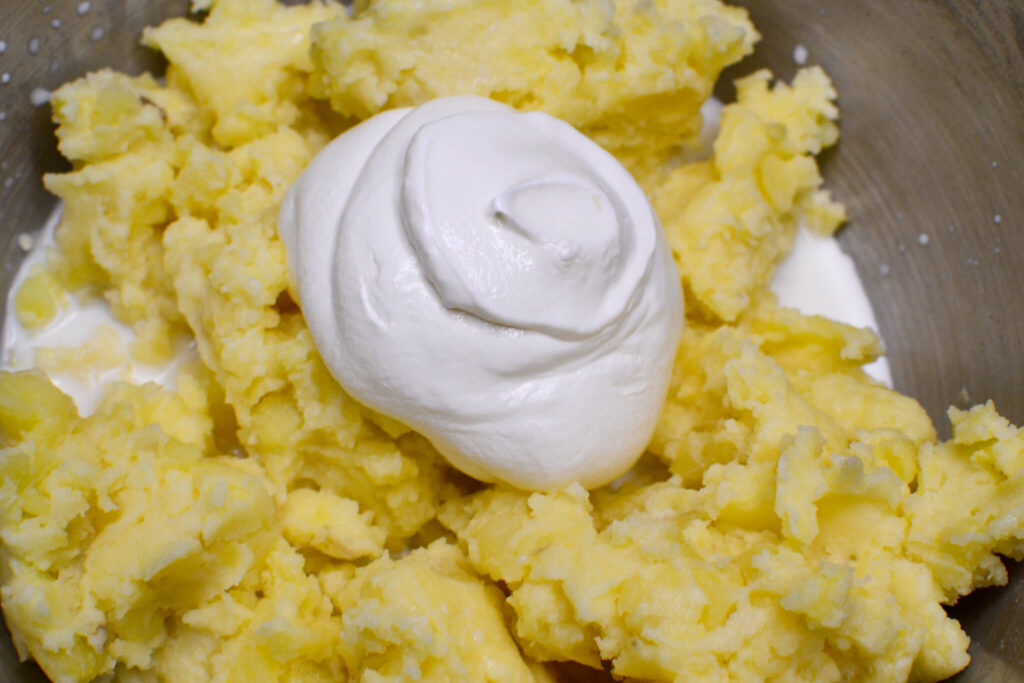
- Sour cream adds tanginess and a subtle creamy flavor to mashed potatoes. It provides a slightly tangy and acidic note that balances the richness of the other ingredients. The sour cream also helps to make the mashed potatoes smoother and creamier in texture.
Together, these ingredients work harmoniously to create a well-rounded and flavorful profile for mashed potatoes.
The seasoning is also extremely important, which is why you should consider the chicken bouillon seasoning.
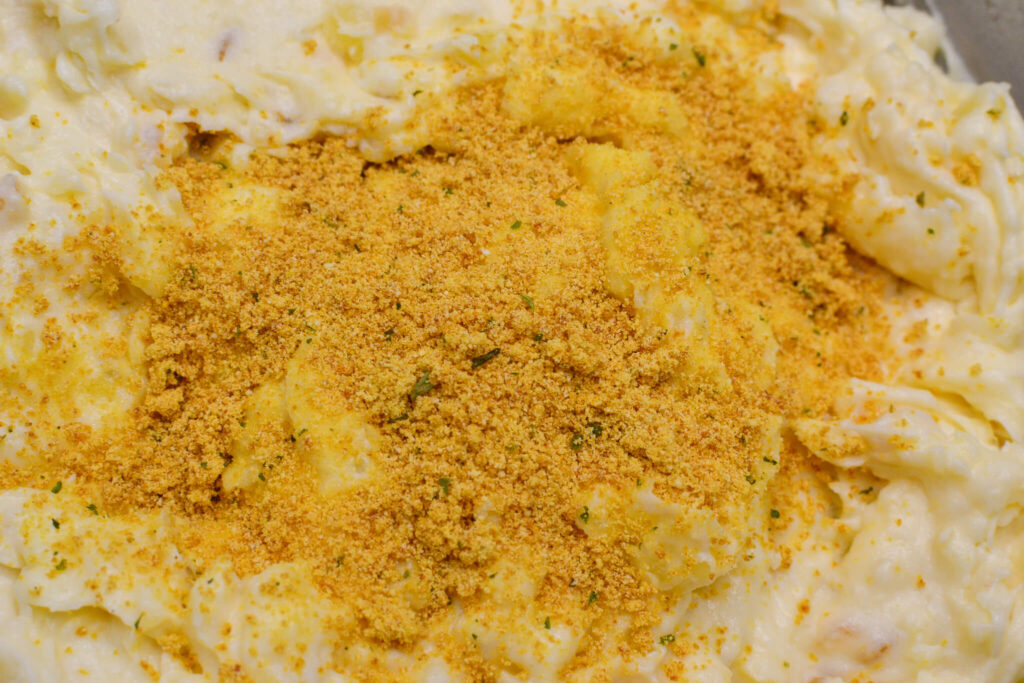
Chicken bouillon seasoning can significantly enhance the flavor of mashed potatoes, making them more delicious and satisfying. This seasoning is a concentrated blend of various ingredients such as chicken flavors, herbs, and spices. When added to mashed potatoes, it infuses them with a rich and savory taste that complements the natural creaminess of the dish.
Chicken bouillon seasoning enhances the flavor of mashed potatoes, making them more appealing and enjoyable. It adds depth and a comforting, home-cooked taste that elevates the dining experience. Whether used in mashed potatoes as a side or main dish, chicken bouillon seasoning boosts the overall taste, making the dish more memorable.
Once all of these ingredients are added, whip the potatoes for roughly 5 minutes. The time it takes can vary depending on factors such as the quantity of potatoes, their type, and the desired texture. However, as a general guideline, it typically takes about 2-4 minutes of whipping on medium-high speed to achieve smooth and creamy mashed potatoes.
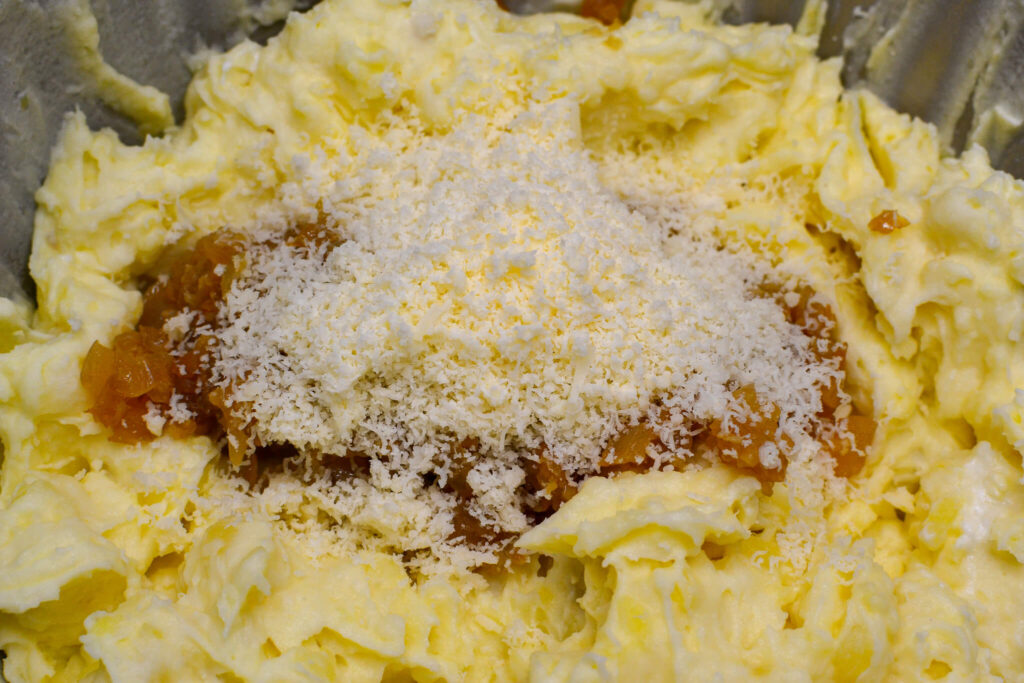
Lastly, add in 1/3 cup of grated parmesan cheese, along with the optional sauteed onions. I didn’t add the entire onion, only about 4 tsp of the mixture.
Continue to whip the potatoes for an additional 2 minutes.
Step 5
Enjoy Your Whipped Mashed Potatoes!

Serve the whipped potatoes with a bit of butter and a sprinkle of chives or green onion for extra flavor.
Enjoy!

Whiplash

Inspiration
Movie Title

More About Whipped Mashed Potatoes
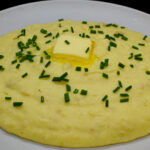
Whipped Mashed Potatoes
Ingredients
- 4 pounds Yellow Potatoes
- 1 Sweet Onion
- 2 cloves Garlic Cloves
- 1/3 cup Sour Cream
- 1/4 cup Whole Milk
- 6 tbs Butter
- 1/3 cup Parmesan Cheese
- 4 oz Cream Cheese
- 1 tbsp Chicken Bouillon Seasoning
- 1 tsp Black Pepper
- 1 bunch Chives
Instructions
- Rinse the cut potatoes thoroughly under running water to remove any dirt or residue.
- Peel and cut the potatoes into roughly equal-sized chunks or cubes, about 1 to 2 inches each, to ensure even cooking.
- Fill a large pot with water and bring it to a boil. Add a pinch of salt to the boiling water.
- Add the peeled and cut potatoes to the boiling water. Boil for about 15-20 minutes, or until the potatoes are fork-tender.
- Once cooked, drain the potatoes using a colander. Allow them to sit for at least 5 minutes to let excess moisture evaporate, which helps in achieving a creamier texture.
- While the potatoes are boiling, heat a skillet over medium heat and add 1 tablespoon of butter.
- Add 1 diced sweet onion to the skillet and sauté until translucent, about 5 minutes.
- Stir in 2 minced garlic cloves and cook for an additional 2-3 minutes until fragrant.
- Remove the sautéed onions and garlic from the skillet and set aside to incorporate into the mashed potatoes later.
- In a large mixing bowl, add the boiled potatoes. Using a stand mixer or hand mixer, begin to whip the potatoes.
- Gradually add 1/3 cup sour cream, 1/4 cup whole milk, and 4 tablespoons of softened butter to the potatoes. Continue to whip until the mixture becomes smooth and creamy.
- Add 4 ounces of softened cream cheese and 1/3 cup grated Parmesan cheese to the mixture. Beat until fully incorporated and the potatoes are fluffy.
- Mix in 1 tablespoon of chicken bouillon seasoning, 1 teaspoon of black pepper, and the sautéed onions and garlic (if using). Whip for an additional 2 minutes to ensure all ingredients are well combined and the potatoes are light and fluffy.
- Top the whipped mashed potatoes with the remaining 2 tablespoons of butter for extra richness.
- Sprinkle chopped chives over the top for a fresh, vibrant touch (optional).
- Transfer the whipped mashed potatoes to a serving bowl and enjoy them warm as a perfect side dish to your favorite main courses.
Whipped mashed potatoes evolved from traditional mashed potatoes, a centuries-old staple in various cuisines. The specific method of whipping to achieve a light, airy texture is more modern.
In the mid-20th century, especially the 1950s and 1960s, this type of mashed potatoes has became popular in the United States. This era saw an increase in convenience foods and kitchen appliances like electric mixers, leading households to try new preparations of classic dishes.
The aim of whipping mashed potatoes was to create a smoother, fluffier texture and add elegance. Whipping introduces air, making the potatoes lighter and more luxurious. Adding butter, cream, or other dairy products further increases their richness.
This dish have since become a favored version of the classic dish in the U.S., commonly served in restaurants and as a side dish during holidays and special events.

